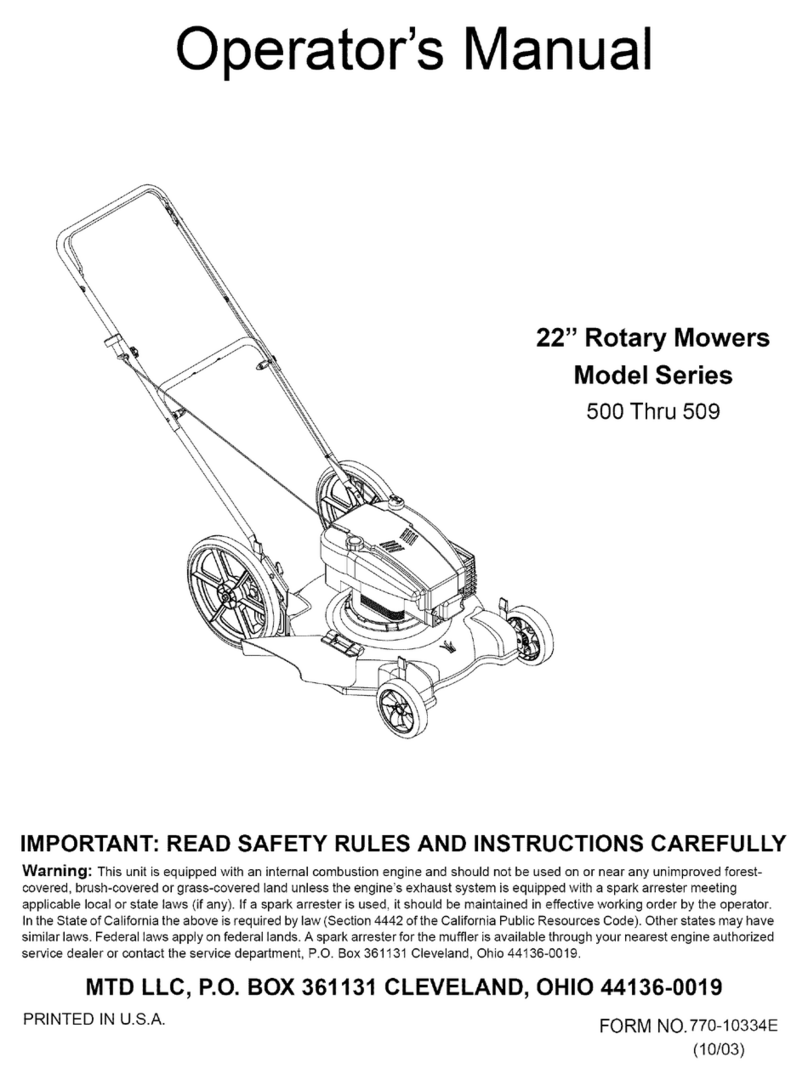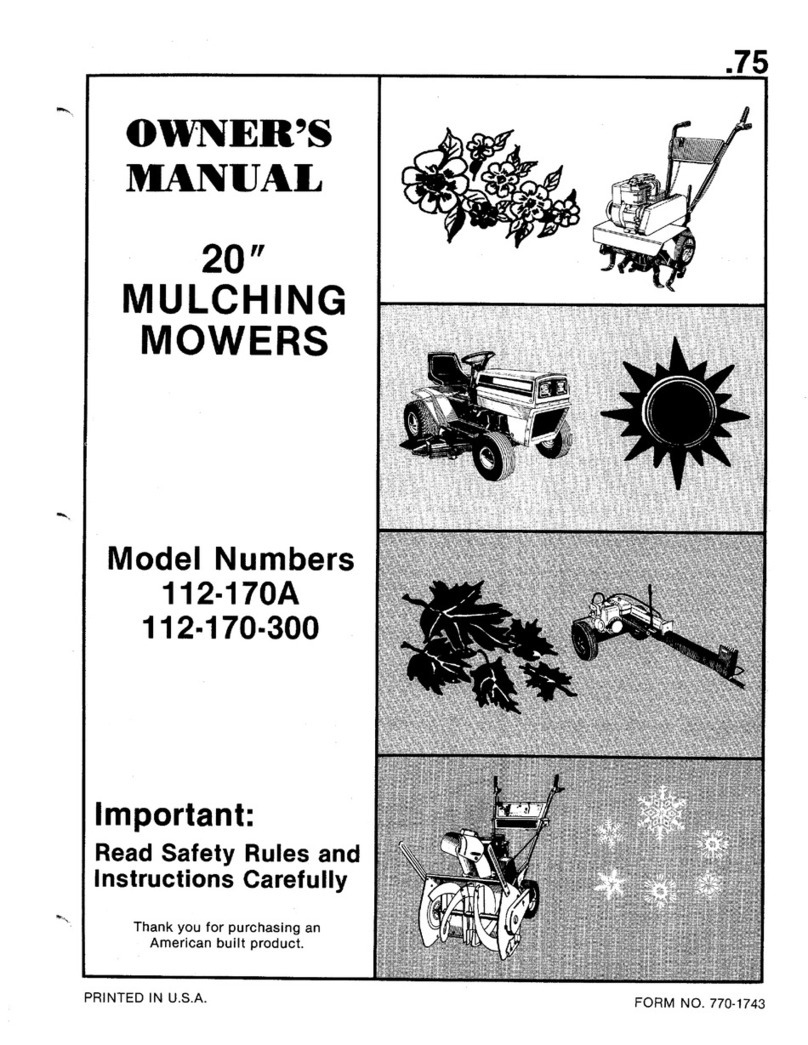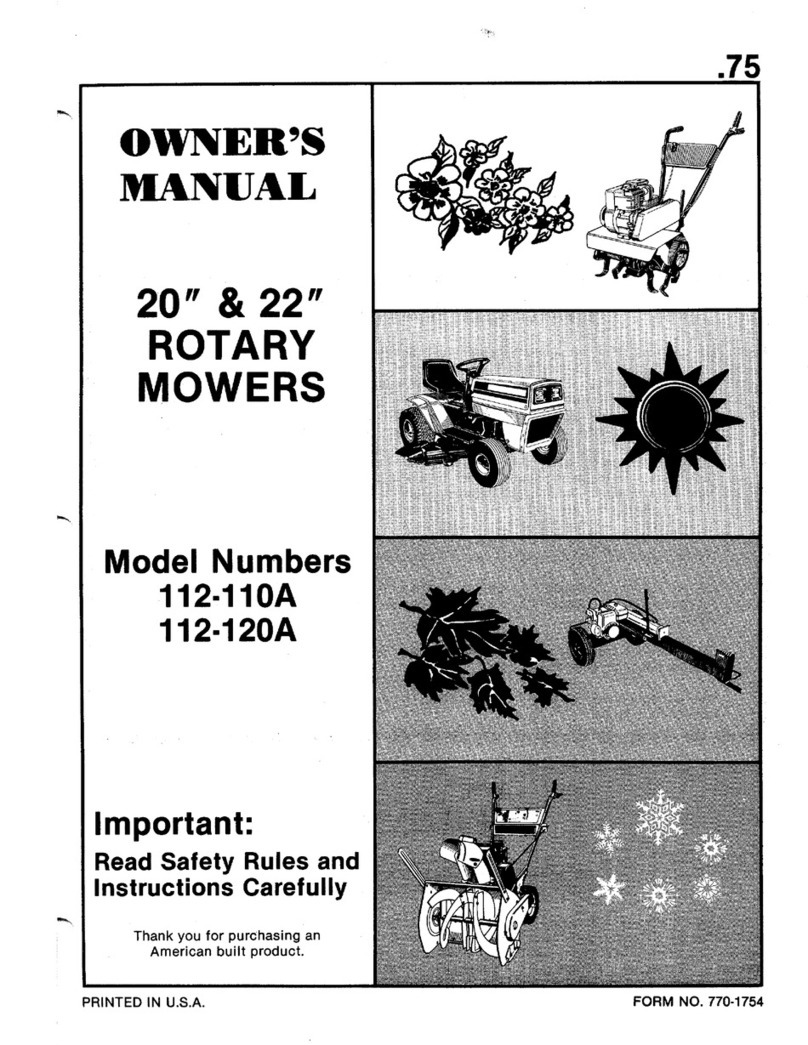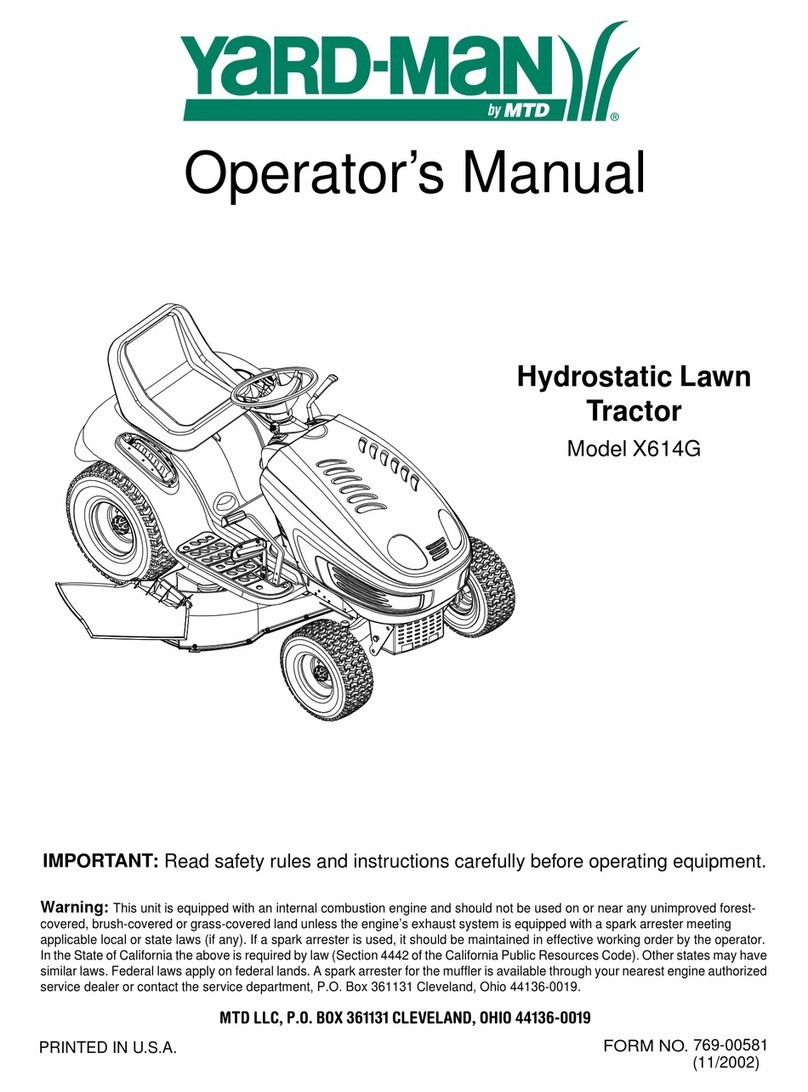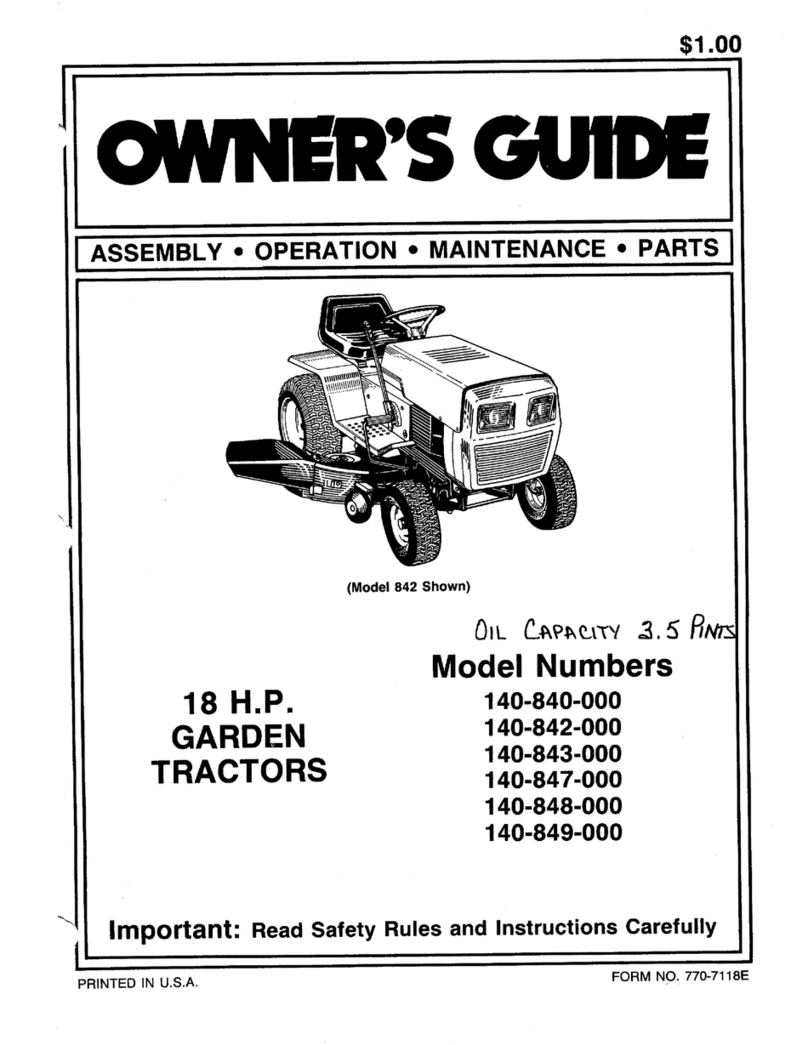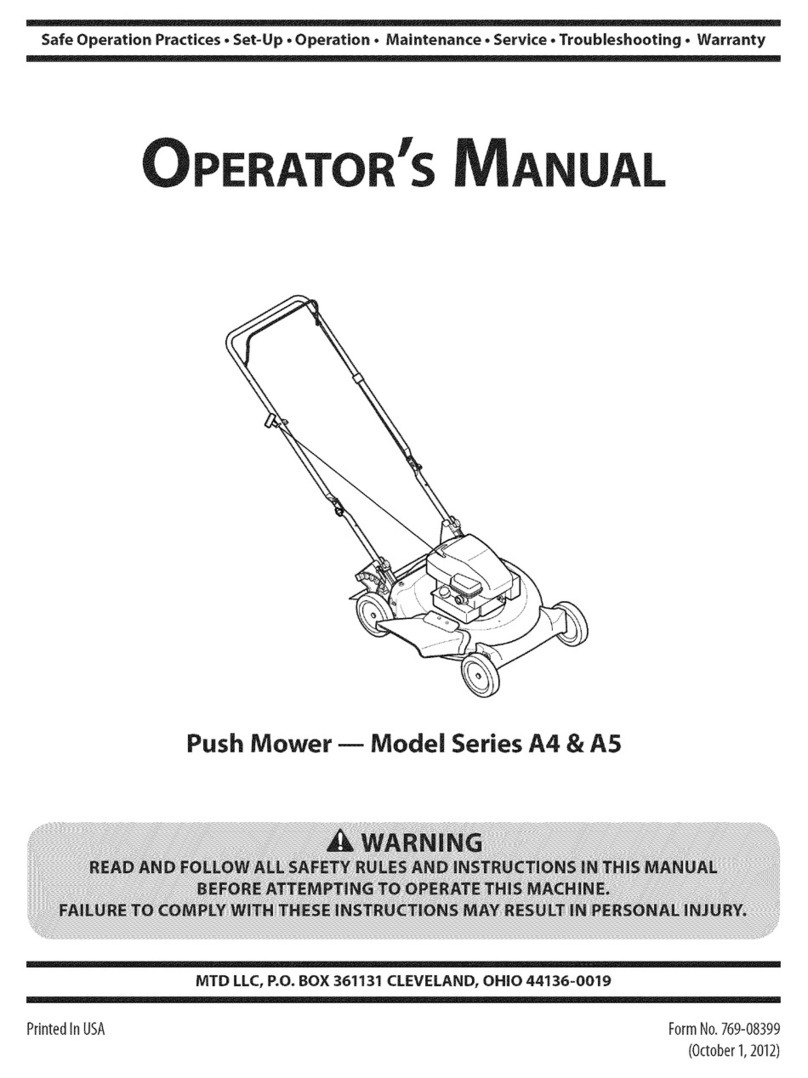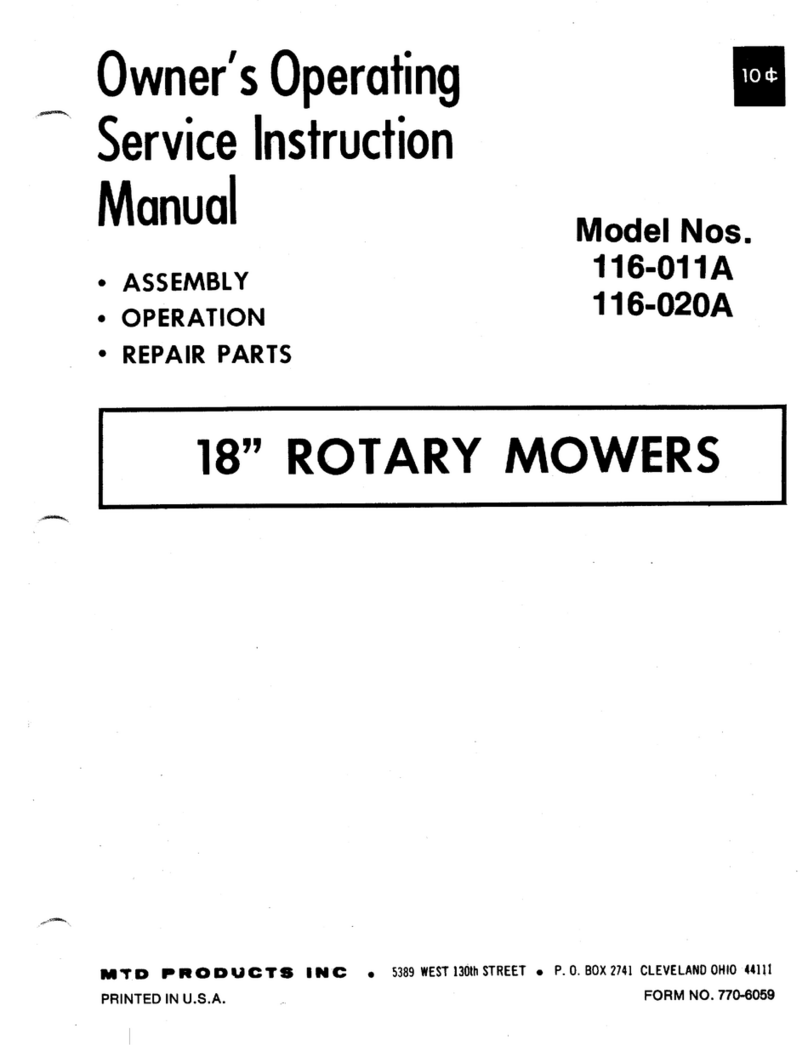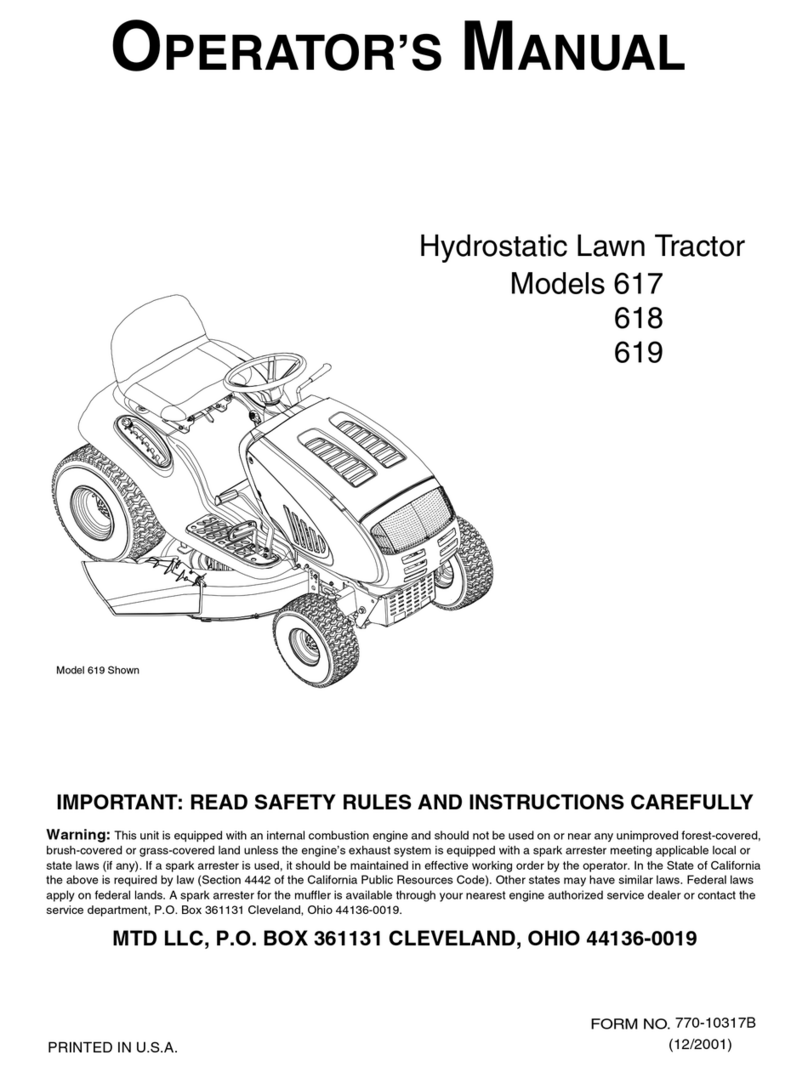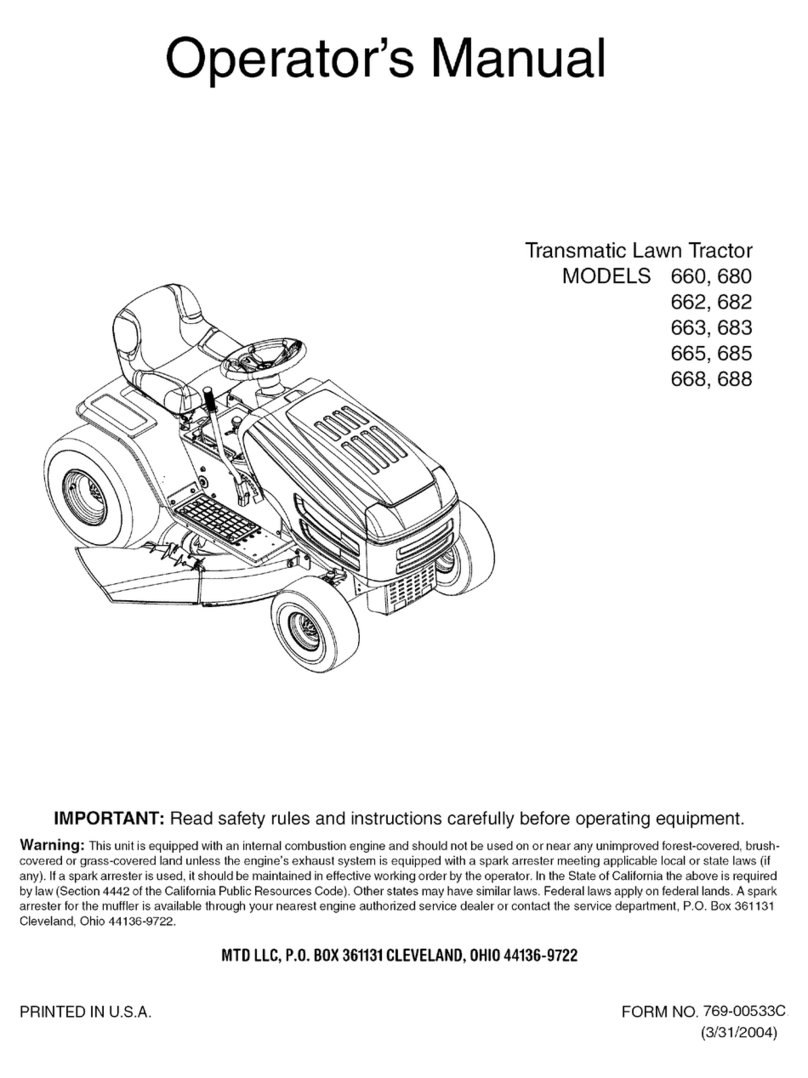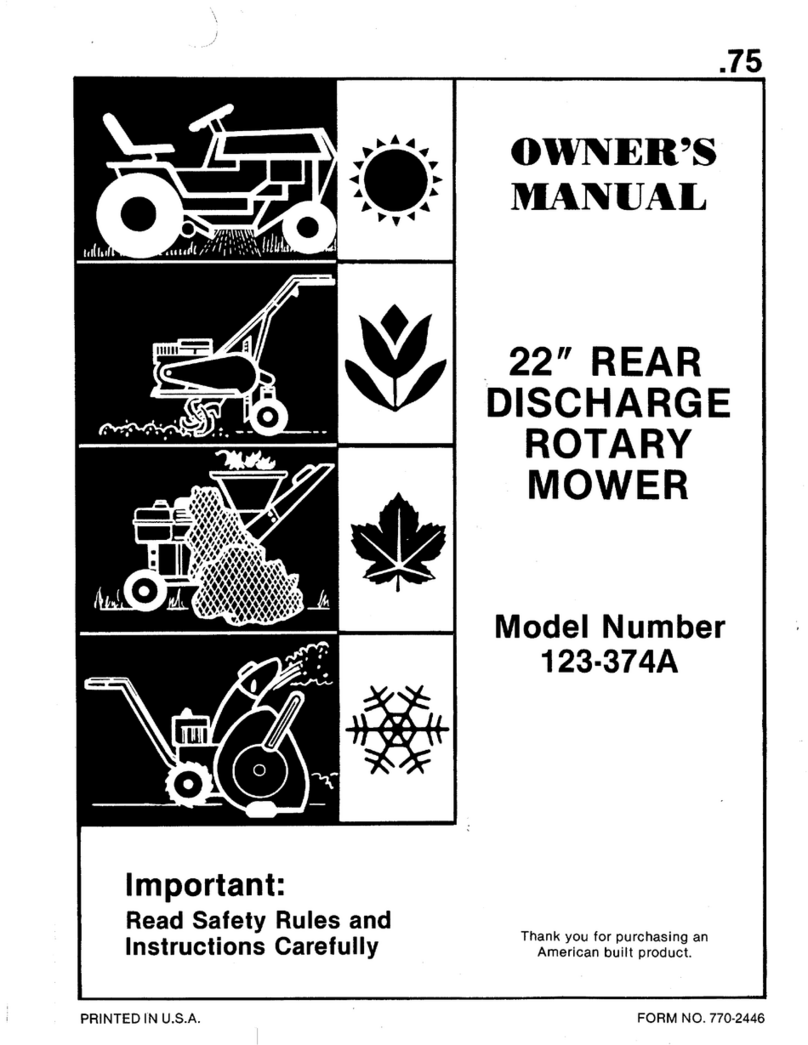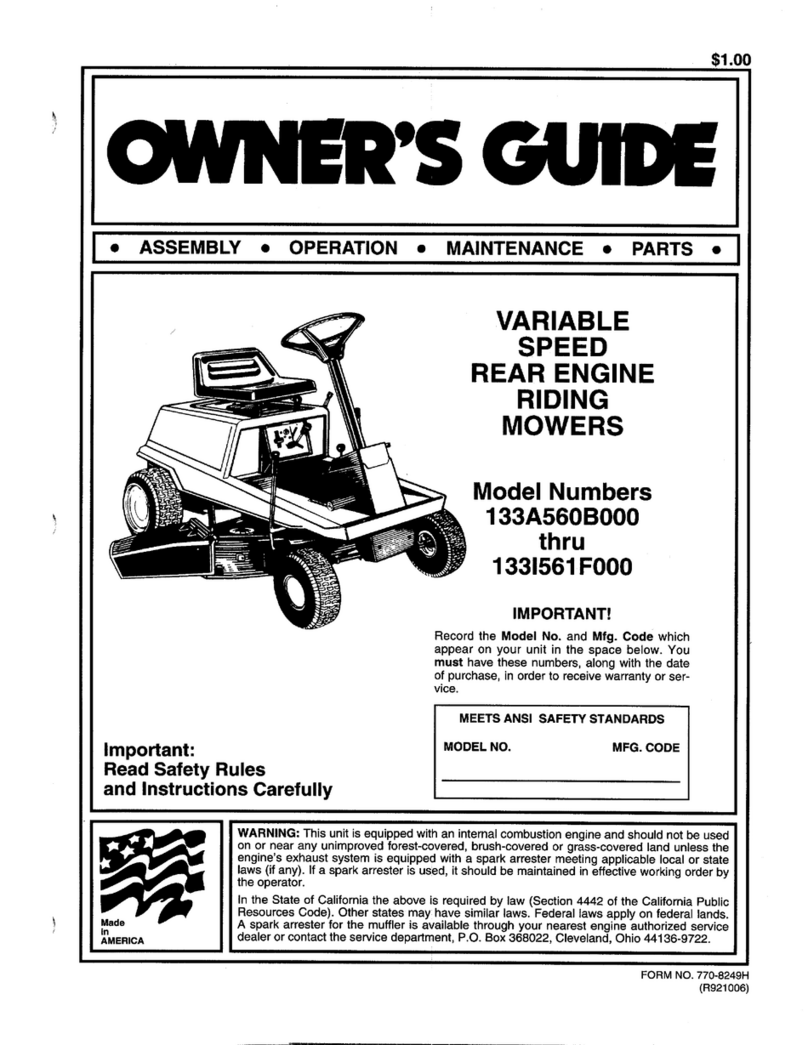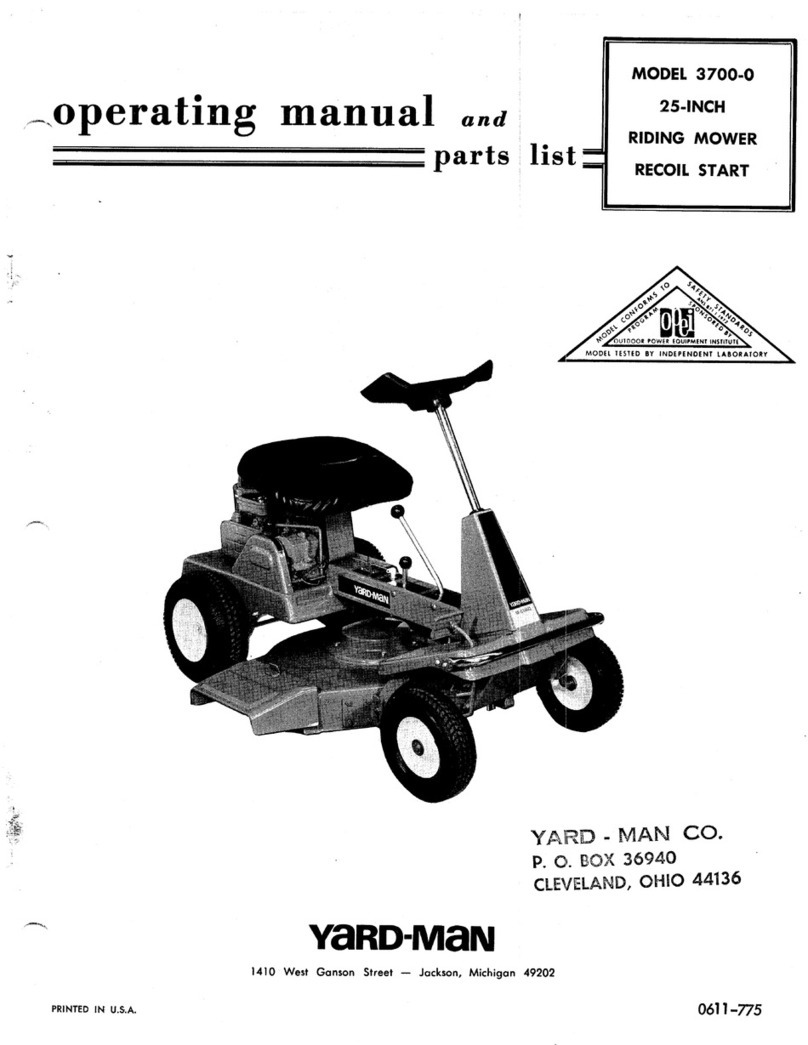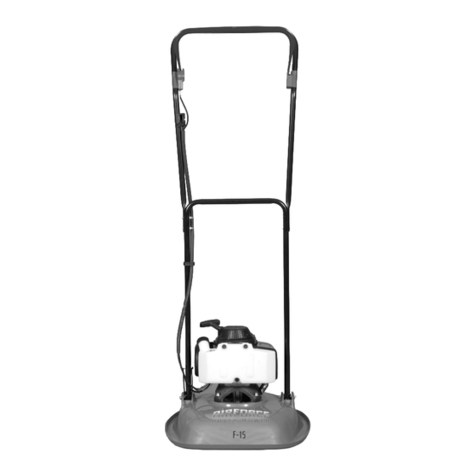MTD 138-320-000 User manual
Other MTD Lawn Mower manuals
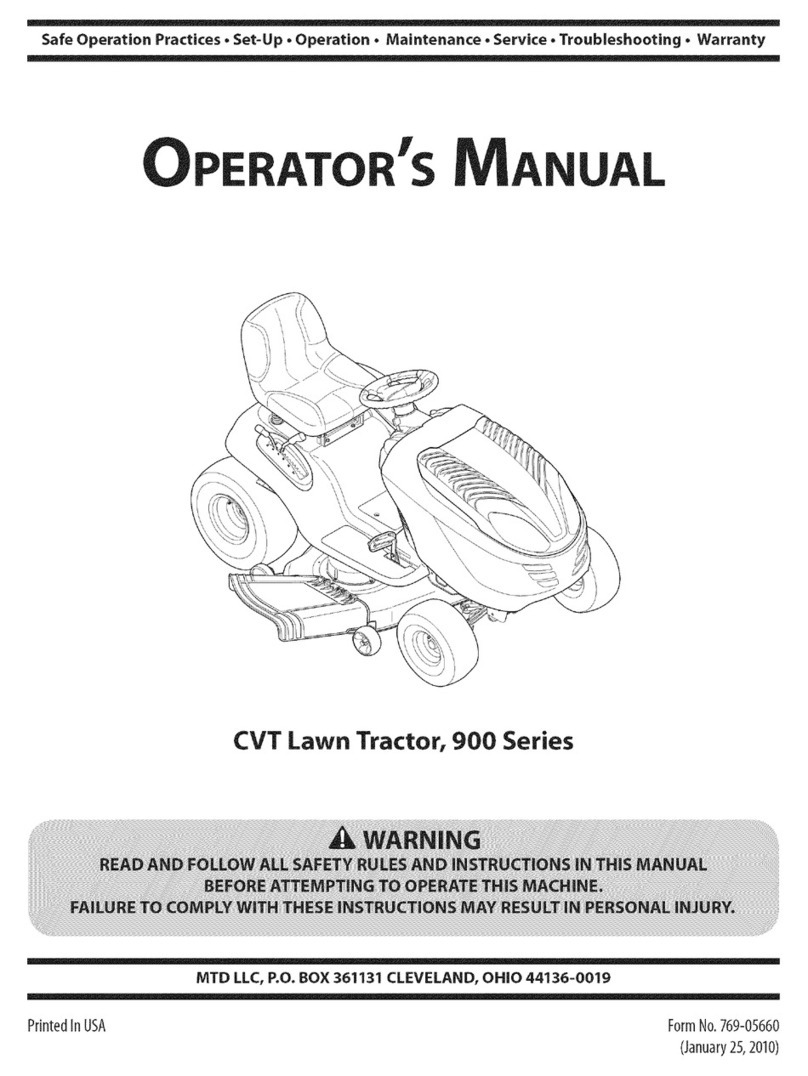
MTD
MTD CVT 900 Series User manual
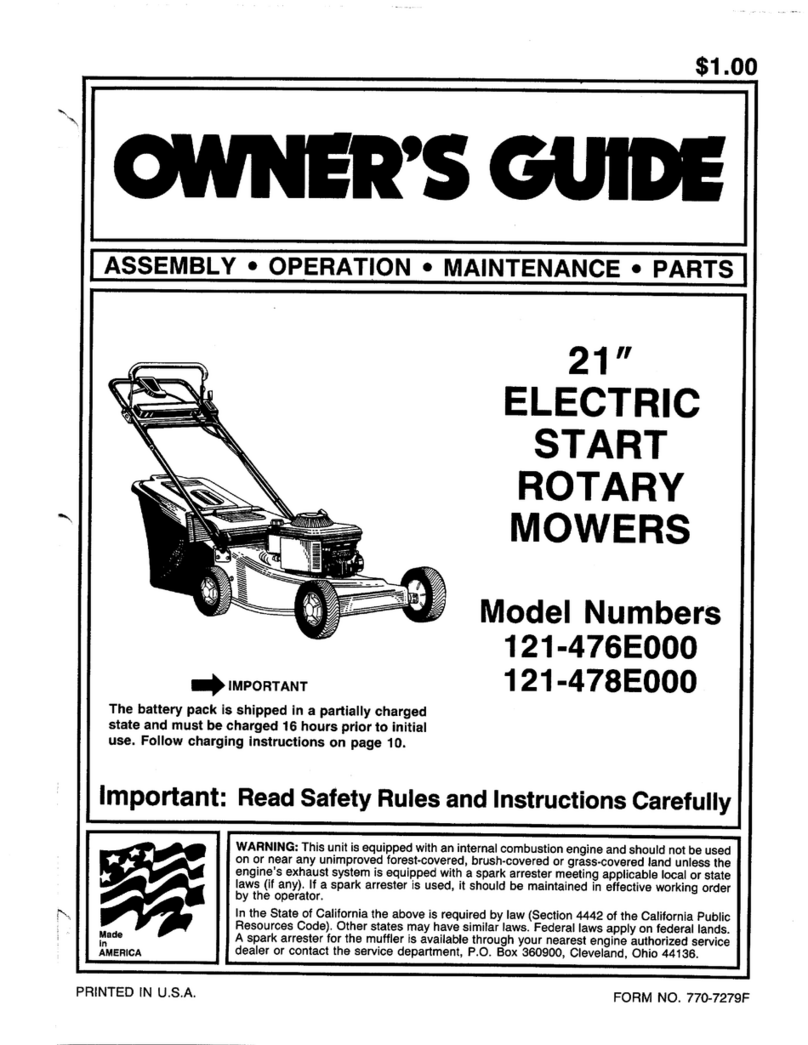
MTD
MTD 121-476E000 User manual
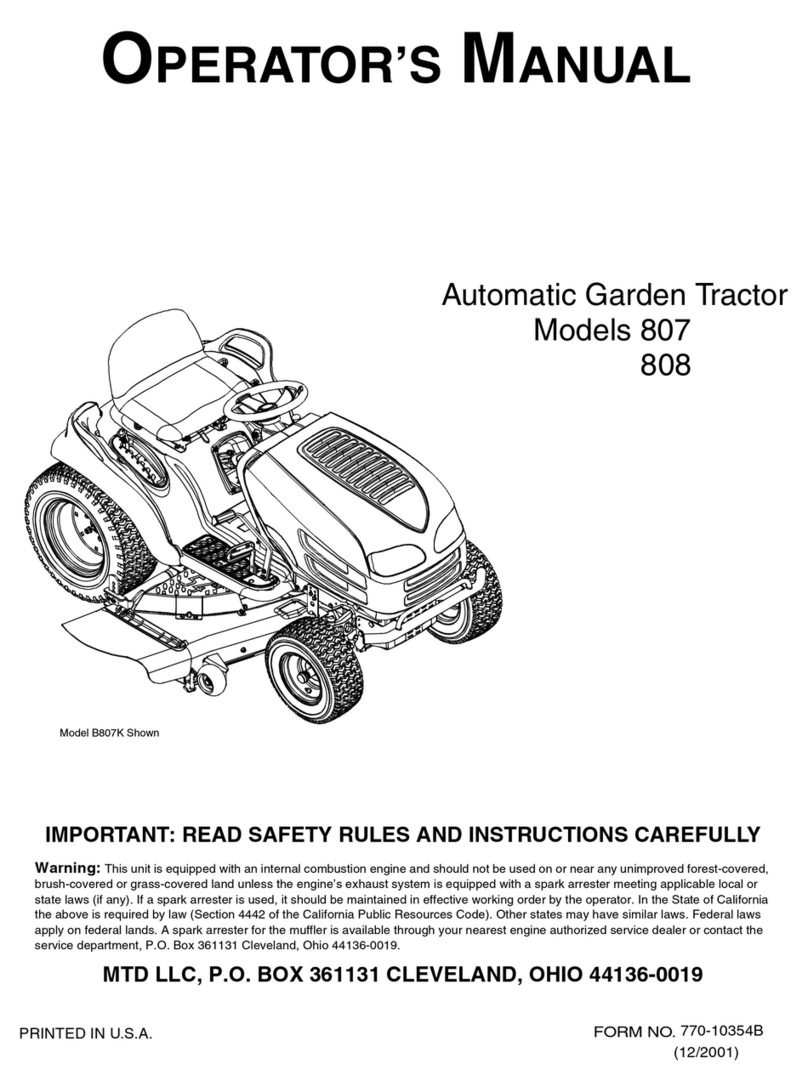
MTD
MTD 807 User manual

MTD
MTD 131-487A User manual
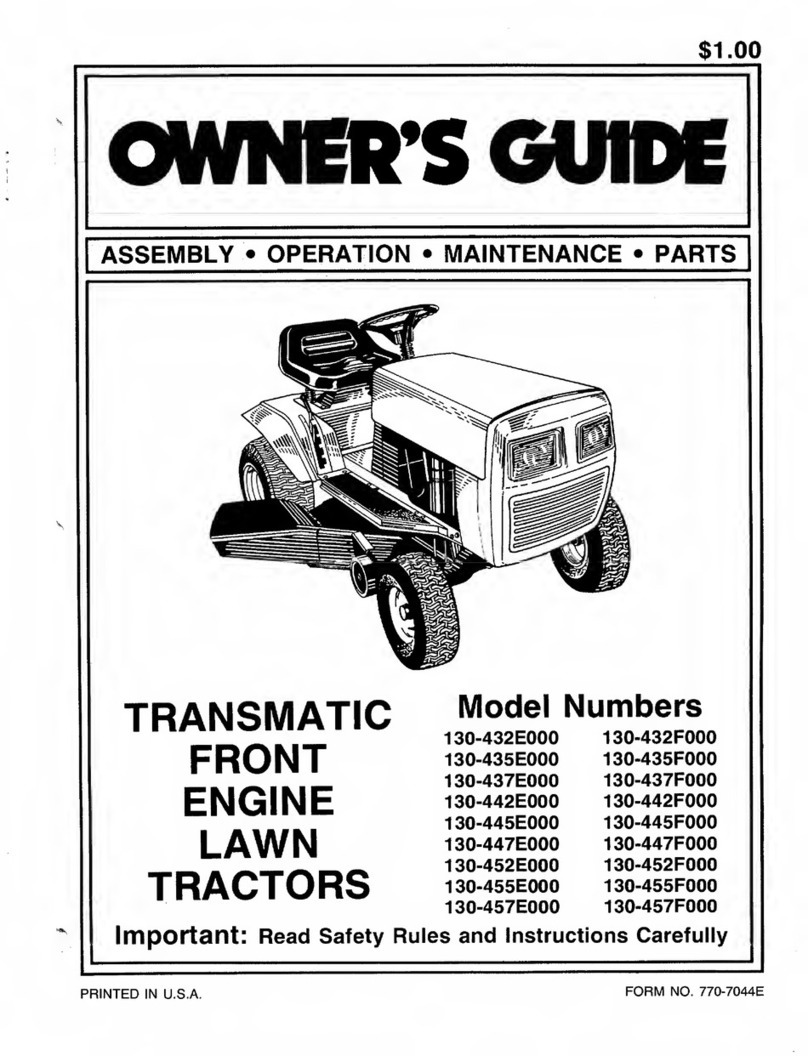
MTD
MTD 130-432E000 User manual

MTD
MTD 12A-989Q795 User manual

MTD
MTD 114-073-000 User manual
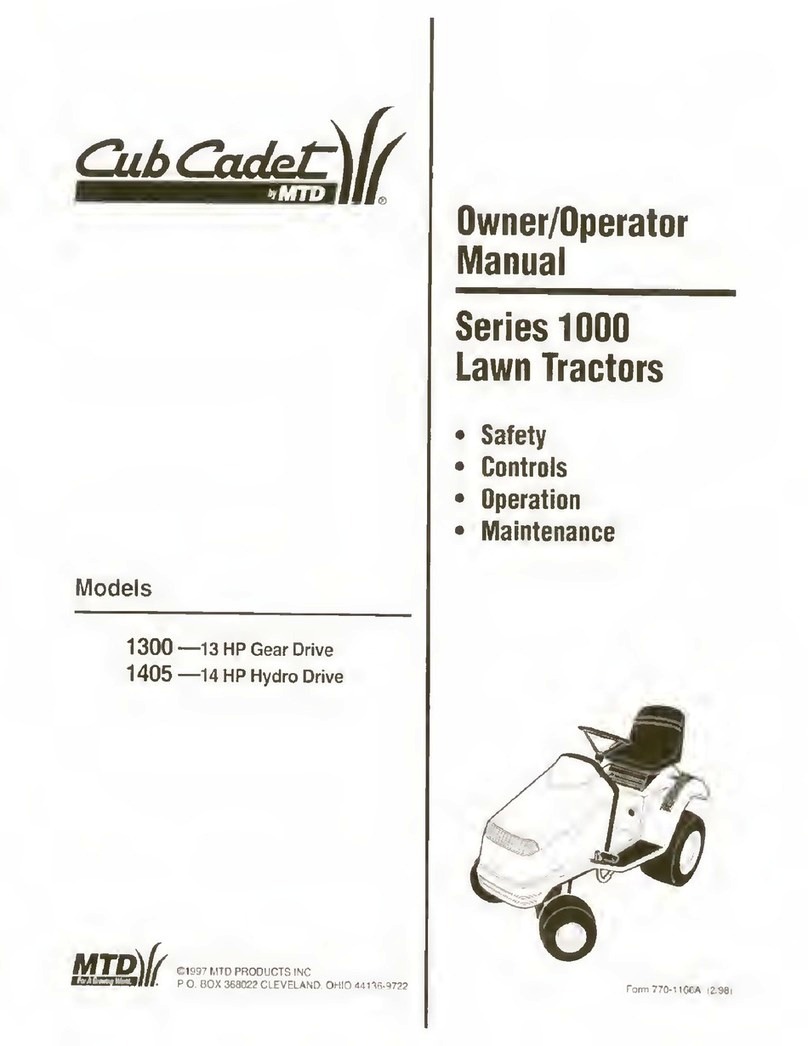
MTD
MTD Cub Cadet 1000 Series User manual

MTD
MTD Series 830 User manual

MTD
MTD Series G460 User manual
Popular Lawn Mower manuals by other brands

TALEN TOOLS
TALEN TOOLS AVR HGM30 manual

DEWEZE
DEWEZE ATM-725 Operation and service manual

Weed Eater
Weed Eater 180083 owner's manual

Husqvarna
Husqvarna Poulan Pro PP185A42 Operator's manual

Better Outdoor Products
Better Outdoor Products Quick Series Operator's manual

Cub Cadet
Cub Cadet 23HP Z-Force 60 Operator's and service manual
